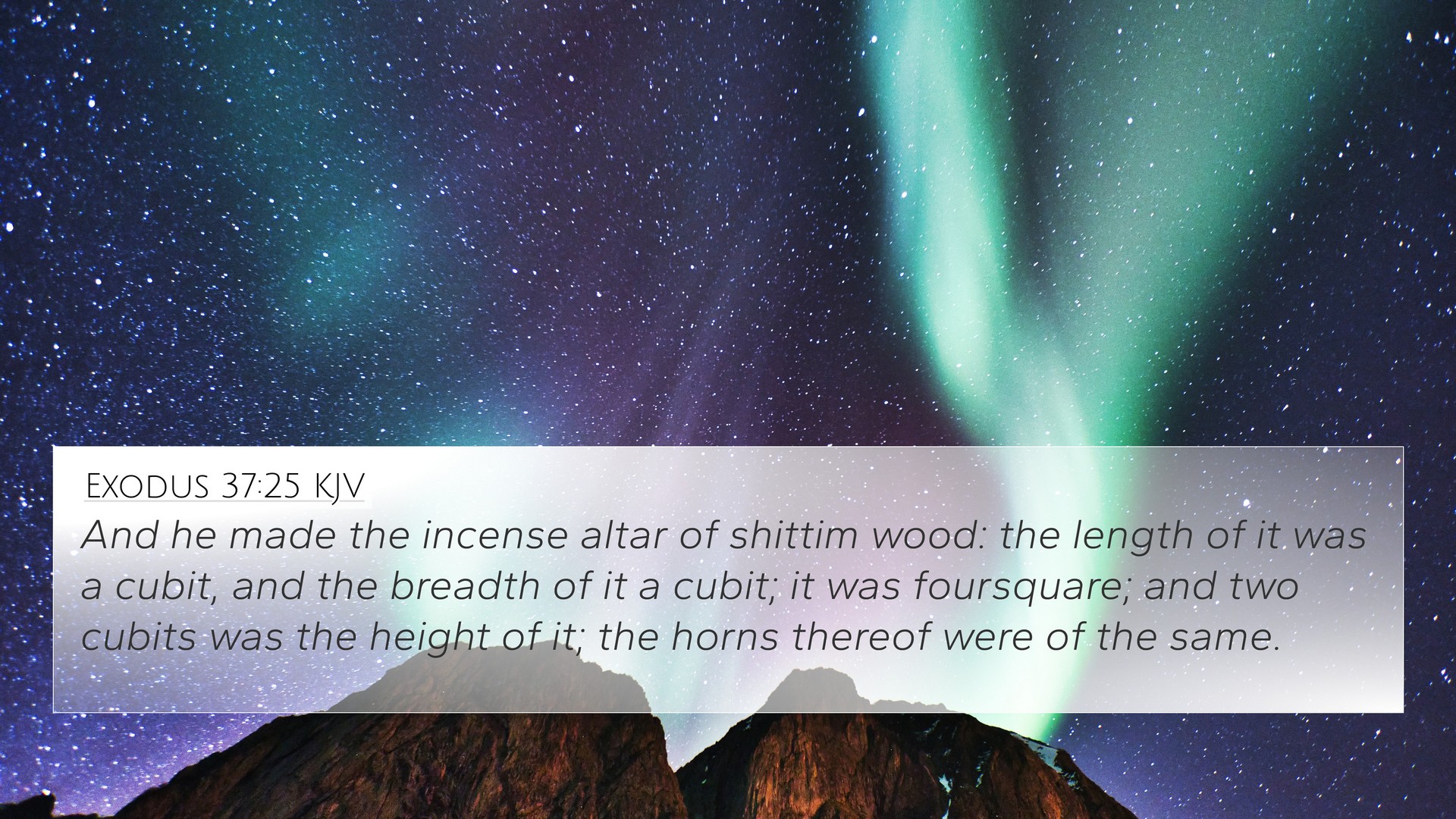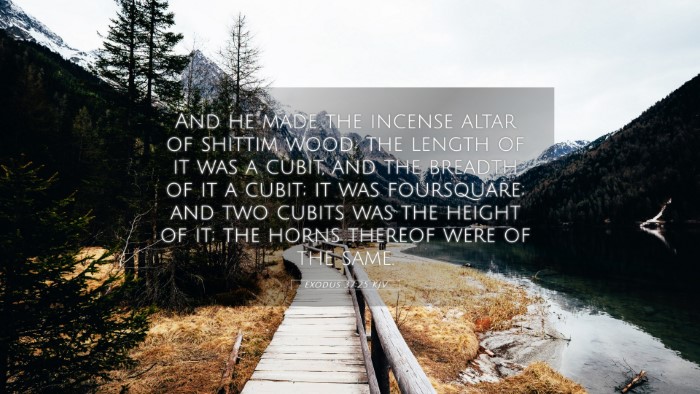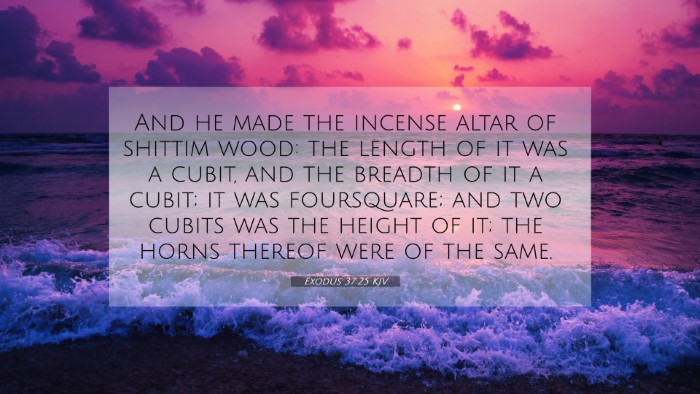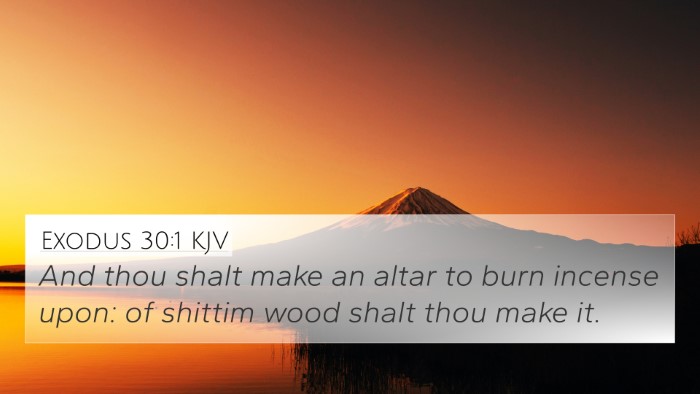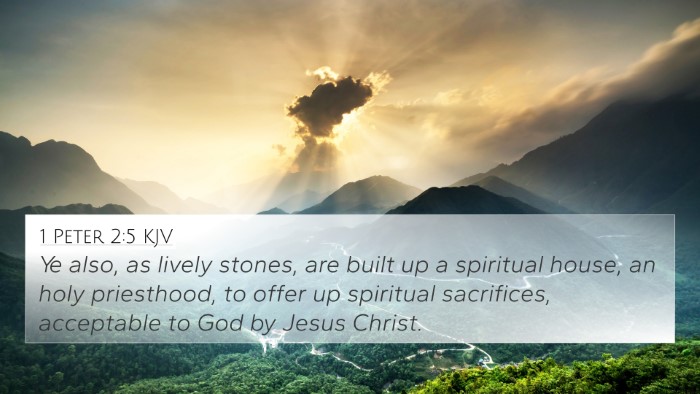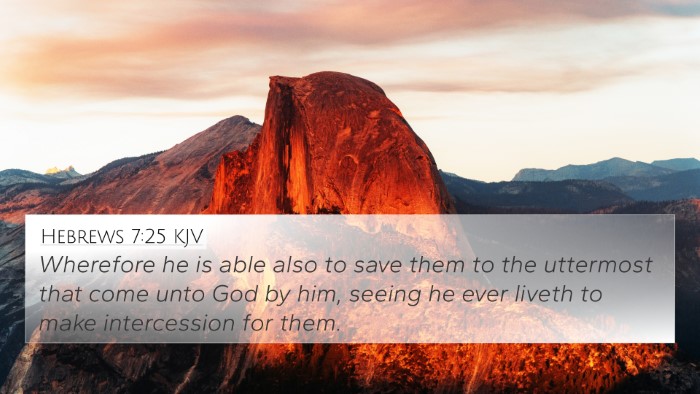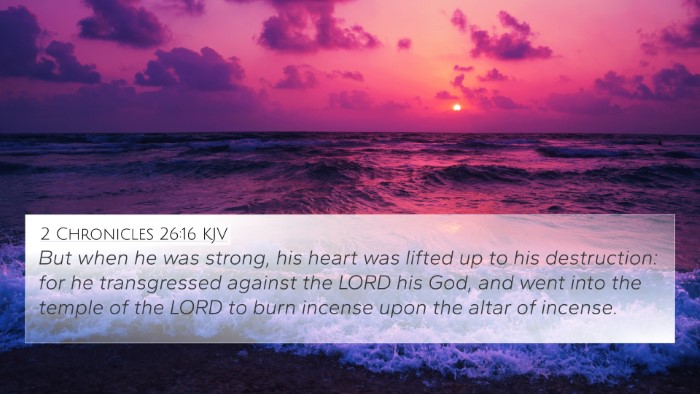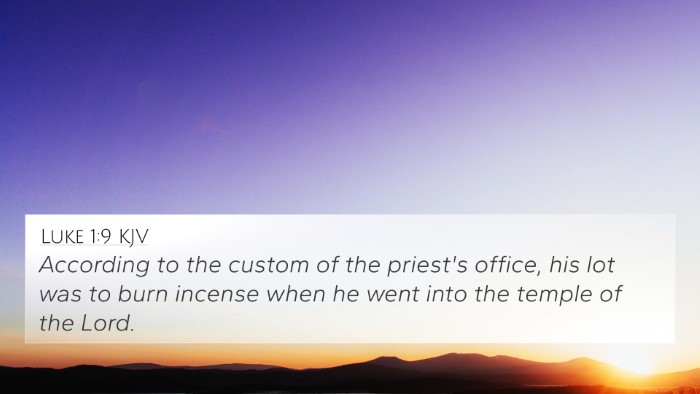Understanding Exodus 37:25
Exodus 37:25 states: "And he made the incense altar of shittim wood: the length of it was a cubit, and the breadth of it a cubit; it was square; and two cubits was the height of it: the horns thereof were of the same."
This verse details the craftsmanship required for the altar of incense, illustrating not only the physical aspects but also the spiritual significance it holds in the Tabernacle's worship system.
Meaning and Significance
In this passage, the focus is on the detailed construction of the incense altar, a vital element in the worship practices of the Israelites. The careful description emphasizes God's desire for holiness and order in worship.
-
Matthew Henry's Commentary:
Henry notes that the altar's dimensions and materials symbolize the importance of prayer and worship. The fact that it was made of shittim wood, a durable and valuable material, indicates that prayer should be serious and enduring.
-
Albert Barnes' Notes:
Barnes illustrates that the square shape represents equilibrium and balance, mirroring the foundations necessary for a true connection with God. The height of the altar suggests elevation in spiritual aspirations.
-
Adam Clarke's Commentary:
Clarke adds that the horns on the altar serve as a symbol of strength and the power of intercession. The incense rising symbolizes prayers lifting towards heaven.
Connections to Other Bible Verses
Understanding Exodus 37:25 allows for numerous connections with other scripture texts, enriching our comprehension of its themes. Below are notable cross-references that illustrate these connections:
- Exodus 30:1-10 - Provides additional details on the altar of incense, including instructions for its use and the perpetual nature of incense before the Lord.
- Hebrews 9:4 - Mentions the altar of incense in the context of the heavenly sanctuary, drawing parallels between earthly and heavenly worship.
- Psalm 141:2 - "Let my prayer be set before thee as incense..." connects the symbolism of incense with the act of prayer, reinforcing the concept of worship.
- Revelation 5:8 - Refers to the prayers of the saints being offered as incense, bringing closure to the symbolism represented in the altar of incense.
- 1 Kings 7:48 - Illustrates the continuation of similar structures in the temple, affirming their ongoing significance in divine worship.
- Luke 1:10 - Describes the incense being burned as Zechariah performed his priestly duties, showing the active role of incense in prayer.
- Romans 12:1 - "Present your bodies a living sacrifice..." correlates with the altar concept, enhancing the understanding of offering oneself to God.
Interpreting the Themes
The altar of incense, as depicted in Exodus 37:25, is more than just a physical structure; it carries profound thematic implications relevant throughout Scripture.
-
Prayer and Worship:
The altar's purpose emphasizes the significance of prayer in a believer's life, being a medium through which they seek communion with God.
-
Divine Presence:
The incense represents the sweet aroma of prayer that draws God's attention and indicates His presence among His people.
-
Sacred Space:
The altar marks a designated space for offering, highlighting God's command for holy worship and the serious nature of approaching Him.
Conclusion
In Exodus 37:25, we see a profound intersection of craftsmanship and spiritual significance in the life of the Israelite worship system. The careful description serves as a reminder of God's call for holiness and the essential role of prayer in our relationship with Him.
For those exploring Biblical texts, using tools for cross-referencing can illuminate connections, enhancing the understanding of themes and patterns within scripture. Utilizing a Bible concordance or cross-reference guide can be invaluable in uncovering the rich tapestry of connections across the Old and New Testaments.
Engaging in a comparative Bible verse analysis strengthens one’s grasp on how different scriptures relate to and support each other, allowing for a more comprehensive understanding of God's message and His salvation history.
